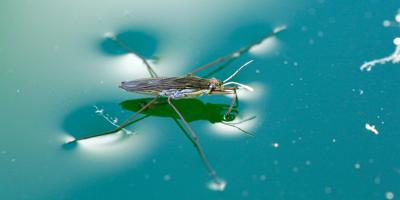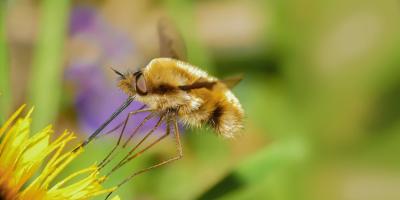Worm in Your Apple? Meet the Top 3 Orchard Pests

September signals the start of the fall season and with it fun family activities like apple picking. Before you find your flannel and set out for your favorite orchard, take a moment to learn about a few other creatures who happen to be big fans of fall, specifically its fruits.
There are three main culprits when it comes to orchard pests: apple maggot flies, plum curculios and codling moths. Each has different characteristics, but all three can be devastating to fruit crops if ignored. That said, professional pest control is neither necessary nor recommended to manage these common orchard pests.
Here’s a detailed look at each one, along with the DIY measures orchards often employ to help protect their fruits:
Apple Maggot Flies
Identification: Slightly smaller than a typical housefly, apple maggot flies are only about 1/4 inch-long with dark markings on their otherwise-translucent wings. In addition to a distinct white spot on their thorax, males have three stripes on their abdomens – females have four.
Damage: Female apple maggot flies pierce an apple’s skin and deposit their eggs in the flesh, which causes pock marks or dimples on the surface. As the larvae tunnel through the fruit, the pulp breaks down and discolors as it begins to rot.
Common orchard response: Bagging apples is an effective, albeit tedious, preventative measure. Sticky traps work to attract females, who, once trapped, cannot lay eggs. Kaolin clay works similarly to bagging, creating a preventative barrier around the apple, but has the added benefit of altering the color of the fruit to make it less attractive. Red sphere traps and beneficial nematodes are effective. Chemical controls including esfenvalerate, carbaryl and spinosad also help and so does removing fallen infested fruit before the maggots can exit it.
Plum Curculios
Identification: Plum curculios are a North American snout beetle, about 1/4 inches long with black, gray, brown and orange markings and a menacing looking jaw beneath its distinct snout.
Damage: Considered the second-worst apple orchard pest (next to codling moths), plum curculios lay eggs inside the fruit, which causes crescent-shaped blemishes that eventually become knotted and swollen.
Common orchard response: Chemical controls applied in rotation are the most effective defense and treatment against plum curculios. Conventional insecticides like organophosphates and pyrethroids kill adult beetles. Neonicotinoids work much the same way, but as they seep into the fruit they also protect against egg-laying.
Codling Moths
Identification: When you find a stereotypical “worm” in an apple, it’s most commonly a codling moth larvae, which are creamy white to pinkish with brown or black heads. Adult moths are about 1/2 inches long and grayish in color.
Damage: Larvae tunnel to the apple core and feed on seeds, then leave a crumbly brownish-gold excrement near the hole where they exit the fruit.
Common orchard response: Fruit-thinning, prompt removal of infested fruit, trunk-banding, fruit-bagging and traps are all effective non-chemical measures. Predator insects like parasitic wasps, assassin bugs, minute pirate bugs and green lacewing larvae also work. Chemical control includes carbaryl, Spinosad and acetamiprid are also effective.
Unlike the signs designating the types of apples in each orchard row, it’s not always easy to determine the type of critter feasting on your fruit. If you found a peculiar pest in your peck of apples, send a snap or sample to us for free identification!



